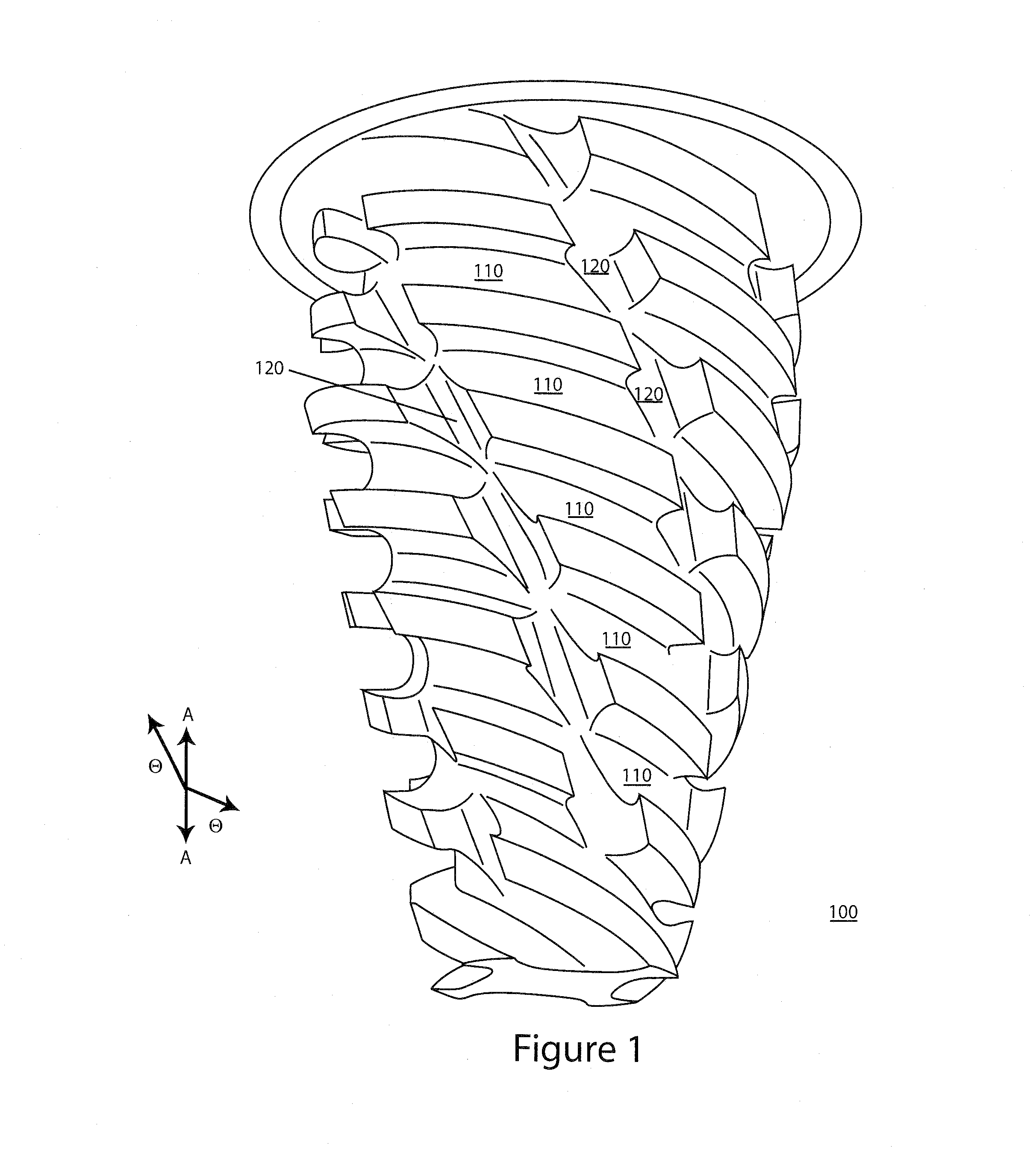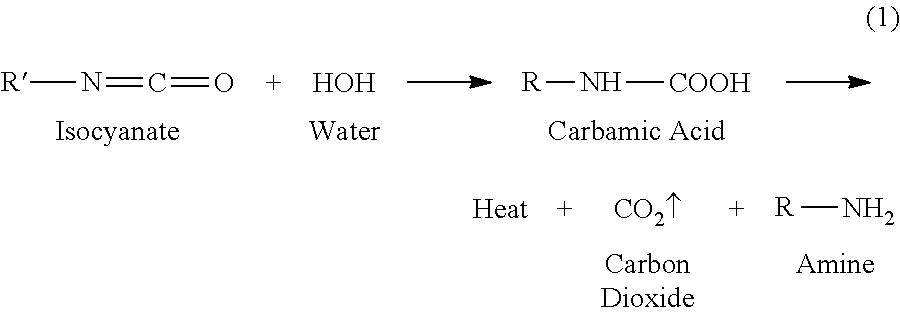Fire resistant foam insulation compositions
a technology of rigid and flexible foam and composition, which is applied in the direction of heat dissipation, building components, construction, etc., can solve the problems of not including prior art, disclosure of compositions that do not disclose poly urethane foam, so as to improve insulating values and increase fire resistance
- Summary
- Abstract
- Description
- Claims
- Application Information
AI Technical Summary
Benefits of technology
Problems solved by technology
Method used
Image
Examples
example 1
Formation of Polyurethane Foam
[0063]60 grams of Honey Bee HB 230 (soy based polyol having a hydroxyl number of 220-240 mg KOH / gm) is mixed with 60 grams of cenospheres having diameters of about 50μ to about 300μ in a 100 ml beaker. Sixty (60) grams of Methyl di-p-phenylene isocyanate (MDI) (Lupranate® M20 Series (BASF) no-added formaldehyde) is then added to the mix with continued mixing. Six (6) grams of Sodium silicate solution, 40 wt. % sodium silicate in water, is then added with mixing. Once all the ingredients have been added, mixing is continued for at least about 10 seconds. At that point, the foaming and polyurethane formation reaction has begun. The formulation begins to change color and generate heat. After an additional about 10 seconds, the foam begins to expand. By the 30th second the formulation is expanding rapidly due to the formation of foam. At about the 45th second the formulation expansion rate begins to slow and material begins to harden. At about the 50th seco...
example 1a
Test Panel of Inventive Polyurethane Foam
[0065]The polyurethane formulation of Example 1 was prepared and after addition and mixing of the sodium silicate solution the immediately poured into a 12 inch by 12 inch by 1 inch thick wooden frame. The frame 12″×12″×1″ (much like a picture frame) was made. Then 2 thin metal plates 12″×12″ were wrapped in non stick film and placed against both sides of the frame. (a sandwich) Then one side of the frame was removed to allow access to the inner volume. The mixture was poured into the frame. Immediately after pouring the mixture into the frame cavity, the side of the frame which had been removed was closed again. The wooden frame was laid on its side inside a press where the frame was held tight so that the expanding foam would not cause the thin metal plates to be pushed away from the frame as the polyurethane foam expanded. The foam was cured within about 60 to about 75 seconds. The pressure from the press was released and the frame was ope...
example 1b & 1c
Test Panels of Inventive Polyurethane Foam were Made as Described in Example 1A
[0066]
SoundTransmissionDescriptionR-ValueClassSample 1Thickness inchesTotalR / inch(STC)A0.945.86.234B1.127.16.338C0.945.96.337
[0067]The test results illustrate the high thermal insulation properties and the high sound insulation properties of the inventive foam.
PUM
| Property | Measurement | Unit |
|---|---|---|
| temperature | aaaaa | aaaaa |
| thick | aaaaa | aaaaa |
| thick | aaaaa | aaaaa |
Abstract
Description
Claims
Application Information
 Login to View More
Login to View More - R&D
- Intellectual Property
- Life Sciences
- Materials
- Tech Scout
- Unparalleled Data Quality
- Higher Quality Content
- 60% Fewer Hallucinations
Browse by: Latest US Patents, China's latest patents, Technical Efficacy Thesaurus, Application Domain, Technology Topic, Popular Technical Reports.
© 2025 PatSnap. All rights reserved.Legal|Privacy policy|Modern Slavery Act Transparency Statement|Sitemap|About US| Contact US: help@patsnap.com


